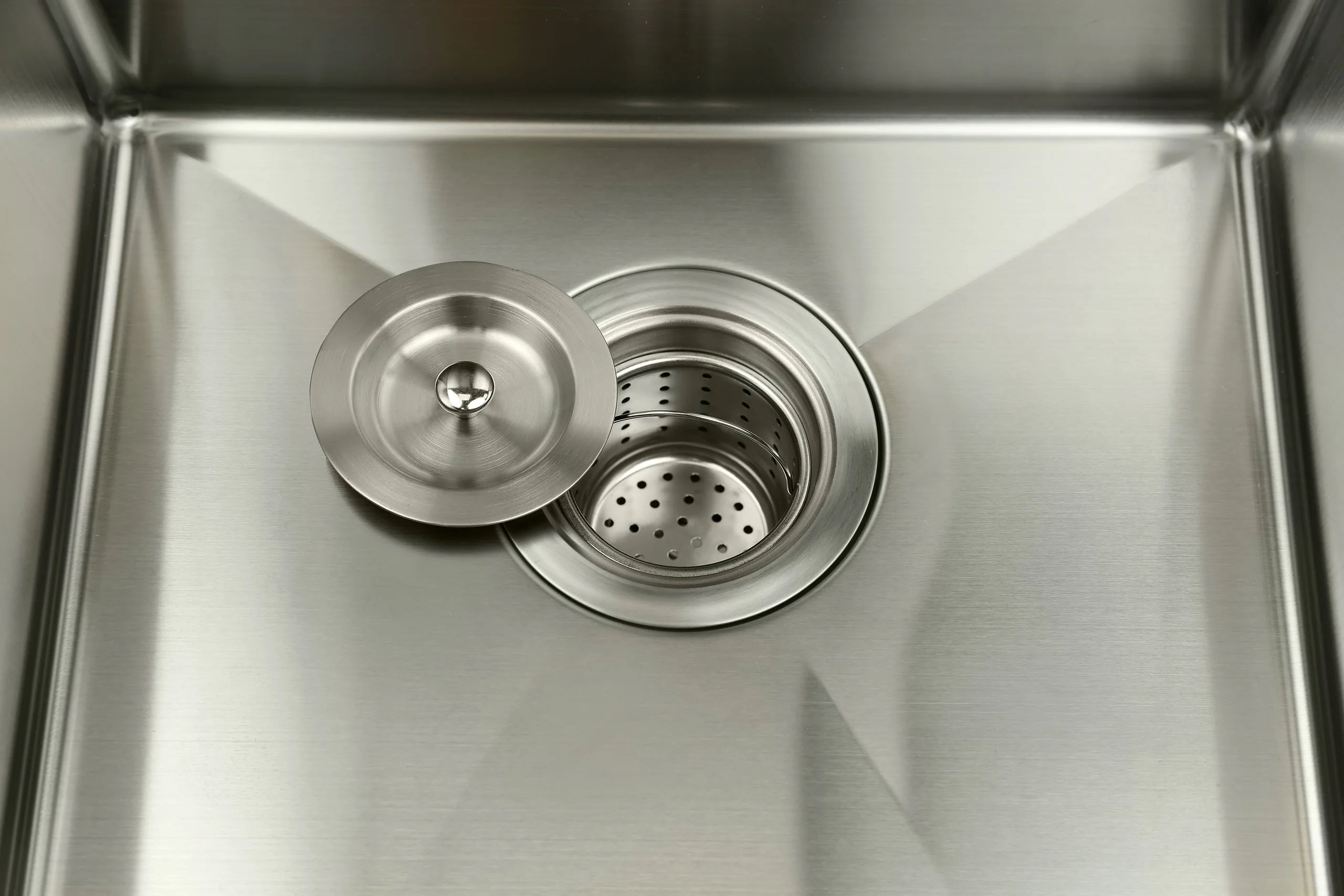
Stainless steel is a material that is widely used in various industries due to its remarkable properties. From kitchen appliances to medical equipment, stainless steel offers durability, corrosion resistance, and a sleek aesthetic. However, there is more to this versatile material than meets the eye. In this article, we will delve into 19 fascinating facts about stainless steel that will leave you amazed and impressed. Whether you are a fan of engineering marvels or simply curious about everyday objects, these facts will provide you with a deeper understanding of the significance and impact of stainless steel in our modern society. So, without further ado, let’s dive into the world of stainless steel and uncover some intriguing facts.
Key Takeaways:
- Stainless steel is a versatile, durable, and hygienic material used in cookware, buildings, and even sculptures due to its resistance to corrosion and heat.
- With its non-magnetic, fire-resistant, and aesthetic properties, stainless steel is essential in industries like automotive, medical, and construction, shaping our modern world.
Stainless Steel is a Versatile Material
Stainless steel is known for its versatility. It is used in a wide range of applications, including cookware, cutlery, appliances, architecture, automotive parts, and even in the aerospace industry. Its ability to resist corrosion and heat makes it a popular choice in various industries.
Stainless Steel is Corrosion-Resistant
One of the most notable properties of stainless steel is its corrosion resistance. The chromium content in stainless steel forms a protective layer on its surface, preventing rust and corrosion. This makes it a preferred choice for outdoor applications and environments with high moisture or chemical exposure.
Stainless Steel is Durable
Stainless steel is incredibly durable and long-lasting. It can withstand extreme temperatures, pressure, and physical impacts without losing its structural integrity. This durability makes it a cost-effective choice in many industries as it requires minimal maintenance and replacement.
Stainless Steel Comes in Different Grades
There are various grades of stainless steel available, each with its own unique properties and applications. The most common grades include 304, 316, and 430, each with different levels of corrosion resistance, strength, and heat resistance.
Stainless Steel is Recyclable
Stainless steel is 100% recyclable, making it an environmentally friendly choice. It can be melted down and repurposed into new products without losing its properties. This helps to conserve resources and reduce waste in the manufacturing process.
Stainless Steel is Hygienic
Due to its non-porous surface, stainless steel is highly hygienic and easy to clean. It resists bacterial growth and is widely used in the food and medical industries where cleanliness is crucial.
Stainless Steel is Non-Magnetic
Many stainless steel alloys are non-magnetic, making them suitable for applications that require non-magnetic properties, such as in magnetic resonance imaging (MRI) machines or electronic devices.
Stainless Steel is Fire-Resistant
Stainless steel has excellent fire resistance properties, making it a popular choice in buildings and structures. It does not emit toxic fumes when exposed to high heat, providing added safety in case of fire.
Stainless Steel is Aesthetic
In addition to its functional properties, stainless steel is also aesthetically pleasing. Its shiny, reflective surface adds a sleek and modern touch to various products and architectural designs.
Stainless Steel is Stronger than Regular Steel
Stainless steel is typically stronger than regular steel, allowing it to withstand higher pressures and resist deformation. This makes it ideal for applications that require strength and durability.
Stainless Steel is Used in Sculptures and Artwork
Artists often choose stainless steel for their sculptures and artwork due to its durability, corrosion resistance, and aesthetic appeal. It can be polished, textured, or manipulated into various shapes, adding versatility to artistic expressions.
Stainless Steel is Used in Medical and Surgical Instruments
Stainless steel’s excellent corrosion resistance and non-reactive properties make it a preferred material for medical and surgical instruments. It ensures a sterile and safe environment during medical procedures.
Stainless Steel is Widely Used in the Food Industry
Stainless steel is extensively used in the food industry due to its hygienic properties and resistance to corrosion and staining. It is commonly found in commercial kitchens, food processing equipment, and storage containers.
Stainless Steel is Used in Power Generation
Stainless steel is utilized in power generation facilities, including nuclear power plants, due to its high resistance to heat and corrosion. It ensures the long-term reliability and safety of critical components.
Stainless Steel is Used in Automotive Applications
Stainless steel plays a vital role in the automotive industry, providing strength, corrosion resistance, and aesthetic appeal. It is used in exhaust systems, car frames, decorative trims, and many other components.
Stainless Steel Can be Fabricated in Different Shapes
Stainless steel can be easily fabricated into various shapes, including sheets, plates, bars, tubes, and wire. This flexibility makes it suitable for a wide range of manufacturing and construction needs.
Stainless Steel is Used in Construction
Stainless steel is commonly used in construction for its strength, durability, and corrosion resistance. It is found in building facades, bridges, handrails, and other architectural elements.
Stainless Steel Provides Environmental Benefits
The long lifespan, recyclability, and energy efficiency of stainless steel contribute to its environmental benefits. It helps reduce the carbon footprint by conserving resources and reducing waste.
Stainless Steel is Essential in Water Treatment
Stainless steel is extensively used in water treatment plants and systems due to its corrosion resistance and ability to withstand harsh chemicals. It ensures the safe and efficient processing of water for various purposes.
Conclusion
In conclusion, stainless steel is a remarkable material that offers numerous benefits and has a wide range of applications. Its durability, corrosion resistance, and aesthetic appeal make it a popular choice for various industries and everyday products. Whether it’s kitchen appliances, construction materials, or medical instruments, stainless steel proves to be a reliable and long-lasting solution.Understanding the properties and facts about stainless steel can help you make informed decisions when it comes to choosing products for your home or business. From its unique composition to its ability to withstand extreme temperatures, stainless steel continues to be a versatile and indispensable material in our modern world.So, the next time you come across stainless steel, remember these fascinating facts and appreciate the incredible qualities that make it an essential part of our everyday lives.
FAQs
1. What is stainless steel?
Stainless steel is an alloy made primarily from iron and a combination of other elements like chromium, nickel, and molybdenum. This composition gives it enhanced durability and resistance to corrosion.
2. Is stainless steel 100% rust-proof?
While stainless steel is highly resistant to rust, it is not entirely immune. The chromium content in stainless steel forms a passive protective layer that prevents corrosion, but if that layer is damaged, rust can still occur in certain conditions.
3. What are the different types of stainless steel?
There are various types of stainless steel, classified based on their composition and properties. Some common ones include austenitic stainless steel (e.g., 304 and 316), ferritic stainless steel (e.g., 430), and martensitic stainless steel (e.g., 410).
4. How can I clean stainless steel?
To clean stainless steel, use mild soap and water or a non-abrasive cleaner. Avoid using steel wool or rough brushes, as they can scratch the surface. For stubborn stains, you can use vinegar or specialized stainless steel cleaners.
5. Can stainless steel be recycled?
Yes, stainless steel is highly recyclable and is frequently recycled. It is a sustainable choice, as it can be melted down and reused without losing its properties.
6. Is stainless steel safe for food contact?
Yes, stainless steel is considered safe for food contact. It is non-reactive and does not leach harmful chemicals into the food. That’s why it is widely used in kitchenware and food processing equipment.
7. Is stainless steel magnetic?
The magnetic properties of stainless steel can vary depending on its composition. Austenitic stainless steel is generally non-magnetic, while ferritic and martensitic stainless steel can be magnetic.
8. Can stainless steel be used in harsh environments?
Yes, stainless steel is highly resistant to corrosion and can withstand harsh environments, including exposure to chemicals, moisture, and extreme temperatures. That’s why it is commonly used in marine and industrial applications.
9. Does stainless steel require any special maintenance?
Stainless steel is low-maintenance, but regular cleaning and occasional polishing can help maintain its appearance. Additionally, if stainless steel surfaces are exposed to chlorides or acidic substances, it’s important to rinse them thoroughly to prevent potential damage.
10. Can stainless steel be used outdoors?
Yes, stainless steel is a great choice for outdoor use. Its corrosion resistance makes it suitable for outdoor structures, furniture, and appliances that are exposed to weather conditions.
Stainless steel's versatility extends beyond industrial applications. Home cooks appreciate its durability and ease of cleaning in cookware sets. Air fryers made with stainless steel provide a healthier cooking option without sacrificing taste. Whisks crafted from this material are essential tools for any kitchen, perfect for whipping up sauces, batters, and fluffy egg whites. Explore more ways stainless steel enhances your culinary experience and makes cooking a breeze.
Was this page helpful?
Our commitment to delivering trustworthy and engaging content is at the heart of what we do. Each fact on our site is contributed by real users like you, bringing a wealth of diverse insights and information. To ensure the highest standards of accuracy and reliability, our dedicated editors meticulously review each submission. This process guarantees that the facts we share are not only fascinating but also credible. Trust in our commitment to quality and authenticity as you explore and learn with us.


